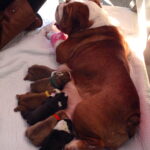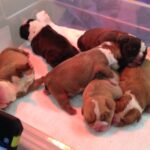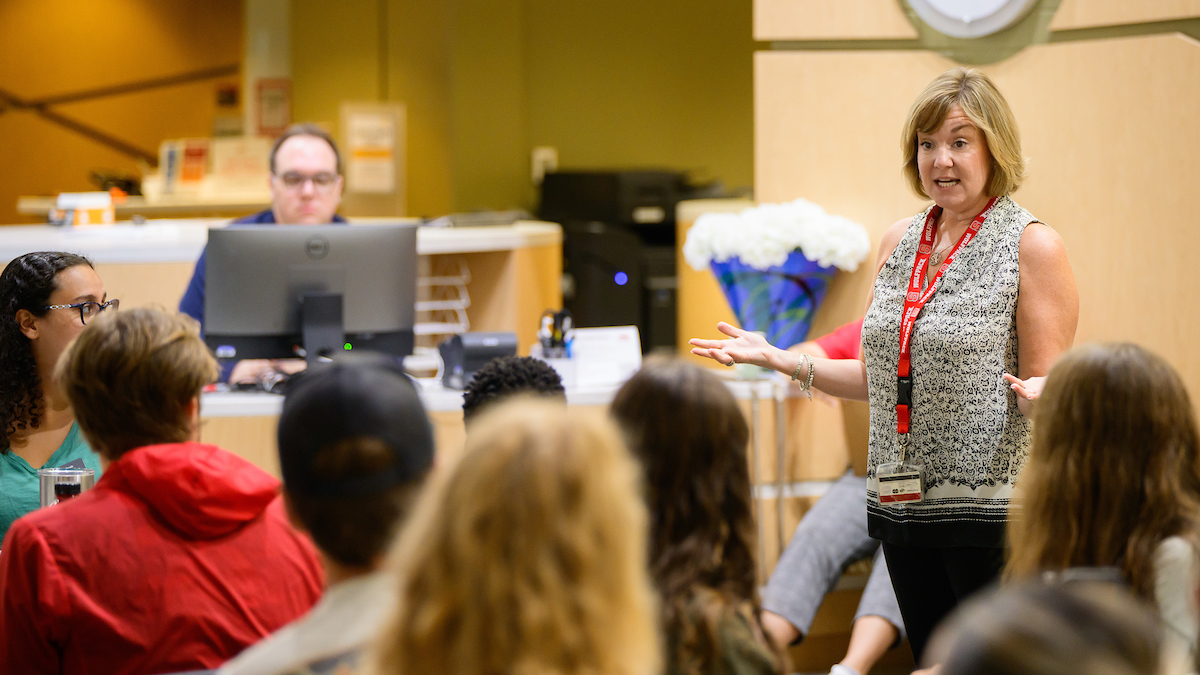The Birth of A Bulldog: A Third-Year Student’s Selective Experience
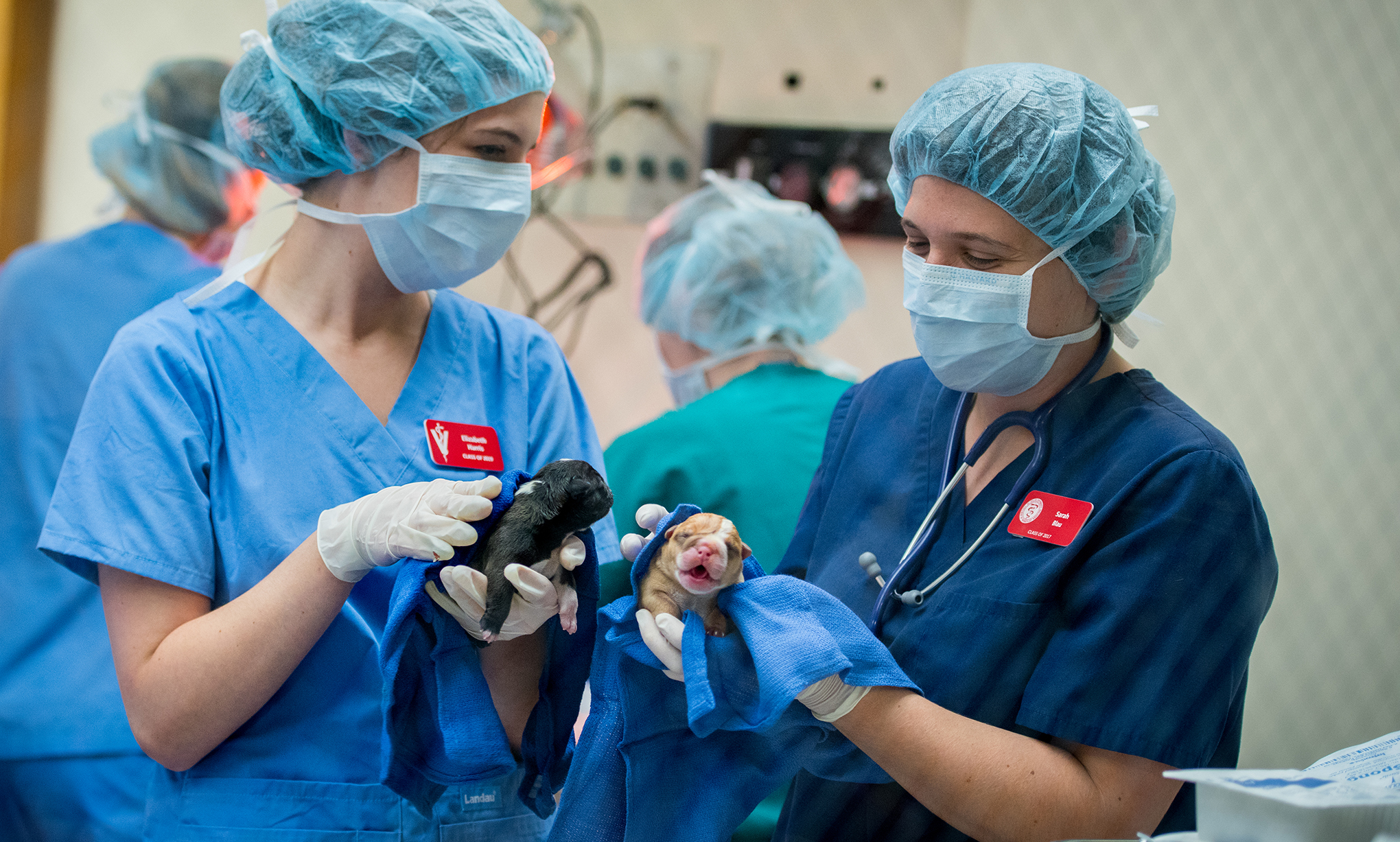
Sarah Blau, a member of the Class of 2017 at NC State University’s College of Veterinary Medicine, is sharing some of what she learns and experiences as a third-year veterinary student.
Dr. Bailey lifted the first motionless pup from the operating table and swiftly turned to place it into an assistant’s awaiting hands. My hands. My heart raced as the weight and warmth of the C-section baby became a reality to me. As instructed, I rubbed and rubbed the wet newborn with a clean towel, simultaneously drying and stimulating. Before a full 30 seconds had passed, I heard a high-pitched and surprisingly forceful “WRAAAAA!” I will never forget the sound of that baby bulldog coming to life in my hands.
This C-section surgery was an unexpected addition to my second week of selectives last semester. Selectives are short, topic-focused courses that NC State veterinary students take each semester following final exams. Selectives last one to two weeks and allow students to further explore topics of particular interest. My second week selective focused on small animal reproduction, what veterinarians call “theriogenology.”
During the course of one week, my selective class of roughly 30 students ranging from first-years to third-years, learned about hormones of reproduction, pharmaceuticals used to influence reproduction, and diseases that may impact the reproductive systems of dogs and cats. In the afternoons, we had hands-on “wet labs” where we learned to do ultrasound exams of reproductive tracts and to preform various clinical tests related to small animal reproduction. These laboratory sessions were made possible by wonderful clients of the NC State Veterinary Hospital’s Theriogenology Service, who brought in their own breeding pets for us to examine and to learn from.
I must admit, I was not overly enthused about this selective before the week began. I had just finished a semester-long class devoted to the topic of theriogenology and had decided it was not the topic for me. Trying to understand the reproductive systems of every
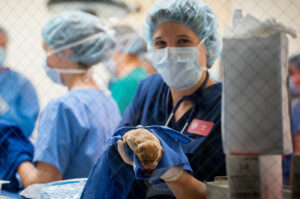
thing from cats to cows made my head spin, and I found the diseases of the reproductive system to be, frankly speaking, quite gross. However, as the first morning of this selective got underway, I realized that without the pressure of midterms and final exams and without six other courses concurrently drawing my attention, the study of theriogenology became more manageable. That, combined with the fact that we were only discussing the species I most enjoy (dogs and cats), it became much more interesting as well.
Topics I had been introduced to earlier in the semester began making more sense. I daresay I even started to get a grip on what those pesky reproductive hormones were up to! And the hands-on afternoon lab sessions brought the methods of reproduction management to life. Despite my preconceived notions on the topic, I found myself thoroughly enjoying the theriogenology selective.
Then, on Thursday, the ball dropped. Well, not a ball actually, a bulldog. The momma bully was a patient of the Theriogenology Service and was scheduled to have C-section surgery the following Saturday. However, nature decided the pups needed to come earlier than expected. On Thursday morning Dr. Scott Bailey, associate professor of theriogenology and course coordinator for the selective, told us his planned afternoon lectures would be cancelled but that anyone who had a clean pair of scrubs could attend and possibly assist with the C-section surgery.I was lucky enough to be front and center assisting with the bulldog puppies. All six puppies were delivered and revived without major incident. They were then placed in a heated bin and taken to their owner to wait for momma bully to recover from surgery. I waited to see mom and pups reunited—a most happy reunion! I left school that day with a grin on my face.
I’m glad that I took this selective. While I can’t say that I’ve been persuaded to pursue theriogenology further, I am happy to have acquired a solid understanding of the basics of small animal reproductive medicine. I feel confident I will be able to address any reproductive issues of patients that may walk through the doors of my clinic someday, whether that means treating the issue myself or referring them to the capable hands of a specialist like Dr. Bailey.
- Categories:
